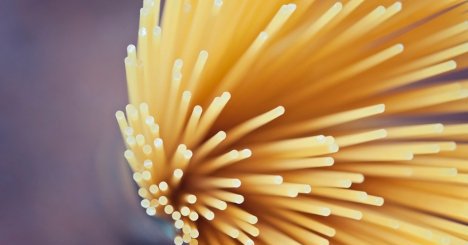'MIT scientists solve age-old spaghetti mystery'
The researchers at Massachusetts Institute of Technology (MIT) in the US found that if a stick is twisted past a certain critical degree, then slowly bent in half, it will, against all odds, break in two.

- Country:
- United States
Scientists at MIT have finally figured out how to break spaghetti into just two pieces, a mystery that has puzzled researchers for decades.
The researchers at Massachusetts Institute of Technology (MIT) in the US found that if a stick is twisted past a certain critical degree, then slowly bent in half, it will, against all odds, break in two.
The finding may have applications beyond culinary curiosities, such as enhancing the understanding of the crack formation and how to control fractures in other rod-like materials such as multifiber structures, they said.
In 2005, physicists from France pieced together a theory to describe the forces at work when spaghetti - and any long, thin rod - is bent.
They found that when a stick is bent evenly from both ends, it will break near the center, where it is most curved.
This initial break triggers a "snap-back" effect and a bending wave, or vibration, that further fractures the stick.
Their theory seemed to solve the puzzle.
However, a question remained: Could spaghetti ever be coerced to break in two?
The answer, according to the study at MIT, is yes - with a twist.
In the study, published in the journal PNAS, the researchers found a way to break spaghetti in two, by both bending and twisting the dry noodles.
They carried out experiments with hundreds of spaghetti sticks, bending and twisting them with an apparatus they built specifically for the task.
The team found that if a stick is twisted past a certain critical degree, then slowly bent in half, it will, against all odds, break in two.
"It will be interesting to see whether and how twist could similarly be used to control the fracture dynamics of two-dimensional and three-dimensional materials," said Jorn Dunkel, an associate professor at MIT.
(This story has not been edited by Devdiscourse staff and is auto-generated from a syndicated feed.)
- READ MORE ON:
- break
- Scientists at MIT
- spaghetti
- twisted
- found
- stick
- two
- researchers
- found stick
- bent
ALSO READ
France Takes Intelligence Lead: Two-Thirds of Intel to Ukraine Now From Paris
Tragic Discovery: Woman Found Dead in Odisha Field
Tragedy Unveiled: Missing Family Found Dead in Muzaffarpur
Verizon Pledges $20 Compensation After Network Outage Disrupts Millions
Fake MLA Sticker Sparks Controversy in Mumbai










